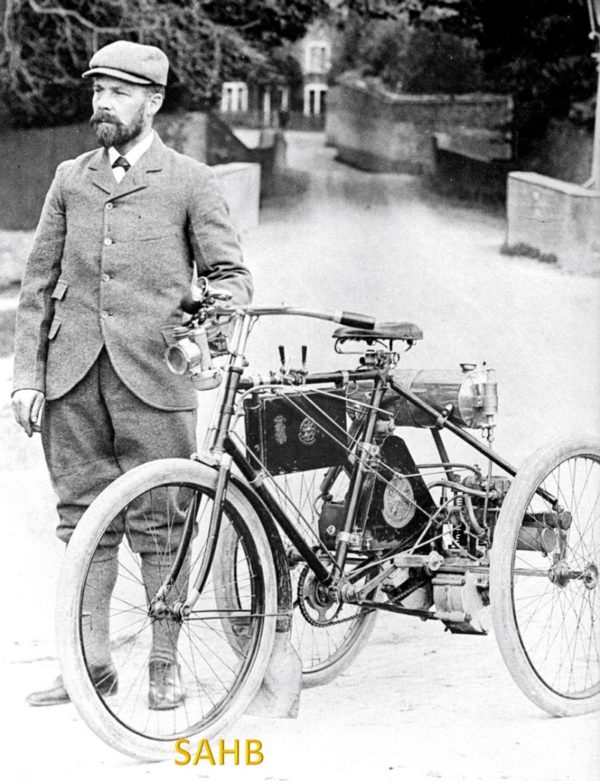
The photographer, or the gentleman in this photograph, has written his name and the date, 1899, in the lower right-hand corner of this delightful image. The motorised tricycle is clearly of De Dion Bouton genus, although possibly constructed in England, as it possesses what appears to be a large retailer’s emblem attached to the surface carburettor box. Detailed inspection with a strong magnifying glass has failed to identify the retailer or constructor. The writer and SAHB member, Michael Edwards, who is writing a book about the company, would like to hear from anyone with their ideas.
However, while the tricycle is most interesting, what had caught the writer’s eye when he purchased this fine photograph many years ago was the lamp mounted to the front bracket. In these Victorian years, if you owned a motor-car, candle or oil-powered lamps were often mounted to enable a driver to make his way homeward should he be caught out after dark. Lamps also served as a warning to pedestrians and oncoming vehicles. There were several French makers of acetylene gas lamps suitable for use on cars from about 1897, but these were expensive and not at all reliable. Rear lamps were almost never used, if for no other reason than, a motorised vehicle was the fastest vehicle on the road, so there was no practical need to have a rear warning light. It would not be until much later that regulations for vehicle lighting, and rear lamps in particular, appeared in the statute books.
The lamp fitted demonstrates a problem in that there were no lamps specifically manufactured for motorcycles at this time. Those that were, possessed very lightweight sprung mounting brackets and poor construction, whereas what was wanted were stout solid brackets, and a lamp robust enough to withstand incessant vibration. However, the lamp fitted is an acetylene gas bicycle lamp manufactured by the Manchester Cycle Components Ltd. Patented by a Jack Kitchen in 1898, he named his lamp ‘The Manchester’. Specifically designed as a bicycle lamp, and manufactured with an insubstantial sprung mounting bracket, which would happily bounce on the front of a slow bicycle, thereby helping to keep the lamp alight. On the other hand, the lamp was not designed to be mounted on a fast, lively motor bicycle or tricycle. It would not be until about 1902 that more robust lamps were created specifically for motorcycles. Consequently, the rider had no choice but to use a bicycle lamp. The writer suspects that not long after this photograph was taken the lamp shook itself to bits, and ended up thrown into the nearest rubbish bin.
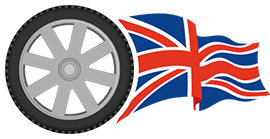


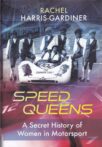
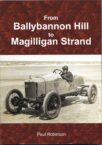
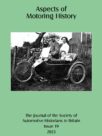
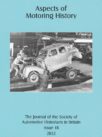
Is it a Humber-made tricycle?
great post